The House of Borgia was a noble family that rose to prominence during the 15 th and 16 th centuries. Originally from Spain, the family established itself in Italy, where they played an important role in the country’s affairs. On the one hand, they were great patrons of the arts, and contributed substantially to the Italian Renaissance. On the other hand, the family was notorious for the innumerable crimes they committed. In fact, it is often the latter that overshadows the former. The House of Borgia had many notable members, the four best-known of whom are Alfonso de Borgia, who became Pope Callixtus III, his nephew, Rodrigo de Borgia, who became Pope Alexander VI, Cesare Borgia, and Lucrezia Borgia, both of whom were Pope Alexander’s children.
The Origins Of The House Of Borgia In Northeastern Spain
The House of Borgia (known in Spanish as Borja) is named after the town they originated from, Borja. This town is located in the province of Zaragoza, which was once part of the Crown of Aragon , in the northeastern part of Spain. In their hometown, the Borgias were part of the nobility, though there was nothing that really made them stand out from the rest of the Spanish noble families in the beginning.
The first member of the House of Borgia that gained prominence was Alfonso de Borgia, who was born on 31 December 1378. As a young man, Alfonso went to the University of Lleida, where he studied canon and civil law. After his graduation, Alfonso first became a professor of law at his alma mater.
Soon, however, Alfonso embarked on a career in politics, and entered into the service of Alfonso V, the King of Aragon . Alfonso not only dabbled with secular politics, but also had a hand in ecclesiastical politics, the two overlapping at times. For instance, Alfonso succeeded in reconciling his master with the pope, Martin V.
In 1429, Martin appointed Alfonso as the Bishop of Valencia . In the years that followed, Alfonso continued to serve the Crown of Aragon. For instance, at one point in time, he was in Naples, which had been conquered by the Aragonese, to reorganize its government. On another occasion, in 1439, Alfonso was the Aragonese representative at a council that sought to re-unite the western and eastern Catholic churches. Although this undertaking ultimately ended in failure, Alfonso succeeded in leaving an impression on his fellow delegates.
In 1444, Alfonso was made a cardinal, as a reward for the negotiations he carried out between the king and the pope. In exchange for papal approval for his hold on Naples, the King of Aragon defended the papacy against its enemies in central Italy. Having been made a cardinal, Alfonso moved to Rome in 1445 and changed his surname from Borja to Borgia.
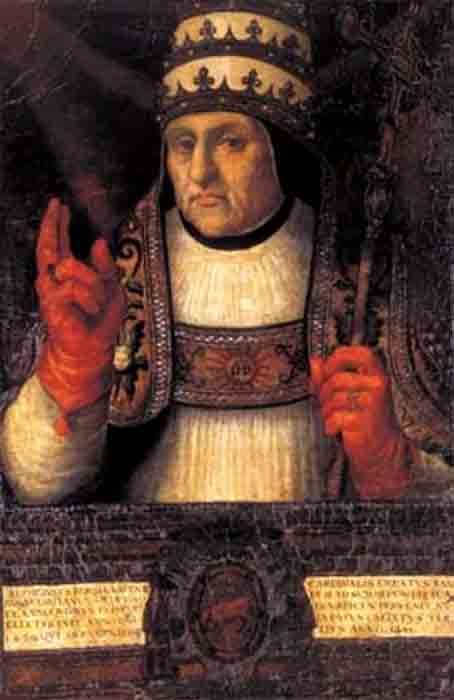
Alfonso Borgia was elected pope on 8 April 1455, and he took the papal name Callixtus III. Two other members of the House of Borgia would also become popes. (Juan de Juanes and workshop / Public domain )
On 25 March 1455, Pope Nicholas V died. A papal conclave followed, and Alfonso was elected pope on 8 April 1455, and he took the papal name Callixtus III. He was chosen partly due to his old age (he was not expected to last long as pope), and as a compromise between the Colonnas and Orsinis, two powerful Roman families. One of the first orders of Callixtus was to launch a crusade to recover Constantinople, which had fallen to the Ottomans, for Christendom. Despite his heroic efforts, the crusade did not materialize. Nevertheless, a papal fleet was successfully assembled, which helped to free many Aegean islands .
On the whole, Callixtus could be considered to have been a decent pope. Indeed, even before his election, he had not been a particularly bad clergyman. For instance, he is recorded to have only held one church appointment at the time, was honest, sober, and his personal life was supposedly blameless.
Nevertheless, according to his enemies, he was extremely corrupt. This is not entirely surprising, however, since at that time, popes commonly used their position to aggrandize their own families.
Nepotism was commonplace as well, and Callixtus was notorious this practice. For instance, he promoted two of his nephews to the rank of cardinal. From a pragmatic point of view, however, one might argue that nepotism was considered the best way to build up a power base.
As expected, Callixtus did not occupy the papal throne for a long time, reigning only for three short years. Still, in these three years, Callixtus was able to accomplish a fair bit. Apart from trying to launch a crusade, Callixtus also revised Joan of Arc’s trial, and proclaimed her innocence, issued several papal bulls regarding Portugal’s maritime explorations, and elevated the Feast of the Transfiguration to a feast day (in 1456), to be celebrated annually on 6 August.
Coincidentally, Callixtus died on the day of the Transfiguration in 1458. Incidentally, Callixtus was not buried in St. Peter’s Basilica , where the tombs of most popes are found. Instead, his final resting place is a chapel in Santa Maria in Monserrato degli Spagnoli, the national church of Spain in Rome.
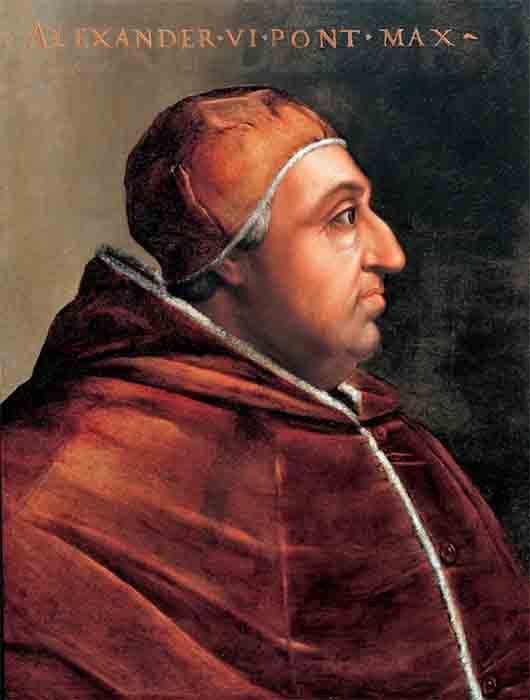
The next pope of the House of Borgia was Rodrigo de Borgia who became Pope Alexander VI, one of the most corrupt and notorious popes ever! (Cristofano dell’Altissimo / Public domain )
Rodrigo de Borgia: The Next Prominent Borgia Leader
The next member of the House of Borgia who rose to prominence was Rodrigo de Borgia, one of Alfonso’s nephews. Rodrigo was born on 1 January 1431 in Játiva, in the Crown of Aragon. Compared to his nephew, Callixtus would seem like a saint. Indeed, Rodrigo, who eventually became pope in 1492, is considered to be one of the most morally depraved men to have occupied the papacy. He is reputed, for instance, to have committed his first murder at the age of 12 and continued to indulge in various immoralities throughout his life.
Rodrigo studied law at Bologna, and was made a cardinal by Callixtus in 1456, when he was only 25 years old. After his uncle’s death, Rodrigo continued to serve in the Roman Curia under the next four popes, before attaining the papacy himself. During this period, Rodrigo gained much administrative experience, and amassed great wealth, but did not attain much power.
In 1492, Pope Innocent VIII died. The three most likely cardinals to succeed him were Rodrigo Borgia, Ascanio Sforza, and Giuliano della Rovere. The outcome of this papal conclave was not dependent on the moral character of each candidate, but on the money that each of them could procure. In the end, it was Rodrigo who won, and he took the papal name Alexander VI.
In other words, Rodrigo quite literally bought the papacy. Alexander’s papacy got off to a promising start. In contrast to his predecessor’s reign, which was marked by anarchy, Alexander administered justice strictly and put an orderly form of government in place. Moreover, he impressed the Romans by displaying the great splendor of the papacy. Alexander was after all a patron of the arts.
Like his uncle before him, Alexander also used his position as pope to enrich the House of Borgia. He went one step further, however, as he was prepared to commit any crime, and was even willing to plunge Italy into war, just so that he could satisfy his greed.
For instance, Alexander had made one of his sons, Giovanni, a cardinal, and Duke of Gandia. The lands that were destined to be the fiefs of the newly created duke included Cerveteri and Anguillara. The latter had been acquired not long before by the Orsinis, with monetary aid from Ferdinand I, the King of Naples. Consequently, Alexander came into conflict with Ferdinand. The pope formed alliances with the king’s enemies, and even encouraged the French to invade Naples.
For all his immorality, however, Alexander was, as mentioned earlier, a great patron of the arts. It was this aspect of the pope that brought such renowned renaissance artists as Raphael, Michelangelo, Donato Bramante, and Pinturicchio to Rome. Amongst other things, a center for the University of Rome was created, the Castel Sant’ Angelo was restored, the Vatican palaces were embellished, and Michelangelo was persuaded to draw plans for the rebuilding of St. Peter’s Basilica.
Alexander has been accused of poisoning his enemies to get rid of them and also of confiscating their wealth. It is a great irony, if it were true, that Alexander was accidentally poisoned by his own son, Cesare Borgia, which resulted in his demise on 18 August 1503.
It has been speculated that Cesare had intended to use the poison on others, but inadvertently poisoned himself and his father. Whilst Alexander died, Cesare recovered. Doubts have been cast on this story, however, and it has been suggested that the pope died of malaria.
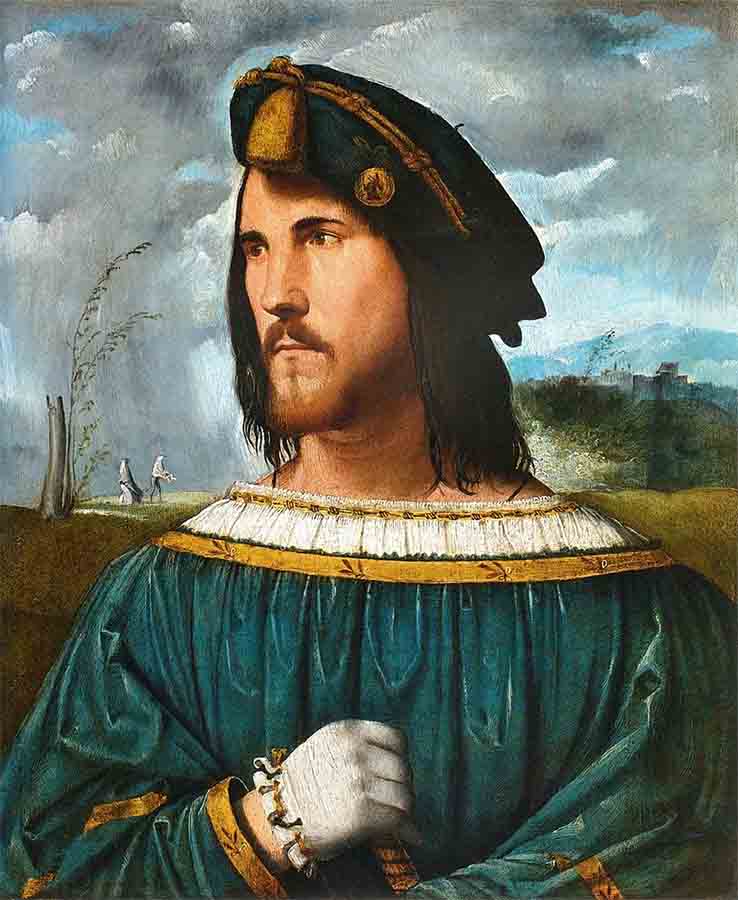
Pope Alexander of the House of Borgia had two children, Cesare and Lucretia. Cesare was as bad as his father, but his sister was fairly “clean.” (Altobello Melone / Public domain )
The Borgia Children Of The Borgia Pope Were Also Notorious
Two of Alexander’s children, Cesare and Lucrezia, were as notorious as their father. Cesare was born on 13 September 1475, whereas Lucrezia was born on 18 April 1480. Both of them had Vannozza Catanei, Alexander’s most famous mistress, as their mother.
Although Cesare was Vannozza’s eldest child, he was Alexander’s second son. Therefore, as was customary, he was destined for a career in the Church. In 1480, whilst Alexander was still a cardinal, the pope, Sixtus IV, gave Cesare a dispensation, which cleared the illegitimacy of his birth, thereby allowing him to pursue an ecclesiastical career.
Two years later, when he was only seven years old, Cesare was made an apostolic prothonotary and canon of the Cathedral of Valencia. At the age of 16, Cesare was made Bishop of Pamplona, and in the following year, when his father became pope, was made Archbishop of Valencia. Finally, in 1493, Cesare rose to the position of cardinal.
In spite of all his ecclesiastical appointments, Cesare was hardly a man of the cloth. His opportunity to play a greater role in secular affairs came in 1497. In that year, Giovanni Borgia, one of Cesare’s brothers, was murdered. It should be mentioned that it is unclear whether Giovanni was Cesare’s older or younger brother. In any case, Giovanni was the Duke of Gandia, having succeeded his half-brother, Pedro Luis, in 1488. In 1496, Giovanni was made commander of the papal army, a position that Cesare himself coveted.
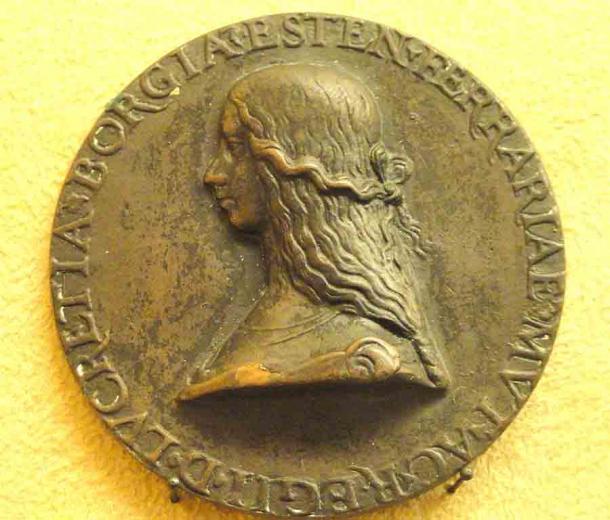
Lucrezia Borgia, sister of Cesare and daughter of Pope Alexander IV as depicted on a Roman coin from 1502 AD. (Unidentified medallist / CC0)
It is rumored that Cesare had his brother murdered, though there is little evidence to substantiate this claim. In any event, Cesare replaced Giovanni as the pope’s secular lieutenant, and gave up his cardinalate in 1498. Through his marriage, Cesare gained the alliance of the French for his father. And through his military skill, he carved out a kingdom for himself in central Italy.
Alexander’s death, however, ended papal patronage for Cesare, and he had trouble holding on to his lands. Eventually, Cesare lost his Italian lands, and ended up in Spain. Whilst he was besieging the castle at Viana, Navarre, in 1507, he was involved in a minor skirmish with the defenders and was killed.
As for Cesare’s sister, Lucrezia, one view is that she was actively involved in the crimes and immoralities committed by the House of Borgia. The alternate view, however, is that she was used by Alexander and Cesare to advance their own ambitions. The former seems to be the more popular view, though the truth seems to lean more towards the latter.
Whatever the truth, Lucrezia married thrice, with each marriage serving as a means to strengthen the House of Borgia. Through her first marriage to Giovanni Sforza in 1493, the House of Borgia formed an alliance with the powerful House of Sforza, which ruled over Milan. When Milan became an enemy of Alexander, however, the marriage was annulled in 1497.
The following year, Lucrezia married Alfonso of Aragon, as her father desired to improve ties with Naples. Later on, however, Cesare formed an alliance with the French, and Alfonso turned from an asset to a liability. In 1500, Alfonso was wounded by four would-be assassins, and strangled to death by one of Cesare’s servants whilst recovering.
Lucrezia’s third marriage seems to have been happier than her first two. This time, she was married to Alfonso d’Este, the son of the Duke of Ferrara. This marriage was arranged by Cesare to consolidate his own position in central Italy.
The marriage took place in December 1501, and in January the following year, Lucrezia left Rome for Ferrara. Lucrezia thrived in her new home and turned Ferrara into a center of the arts and culture. Whilst Alexander’s death impacted Cesare’s life negatively, it may have had a positive effect on Lucrezia’s, since she was now free from the political machinations of her family. On 24 June 1519, at the age of 39, Lucrezia died following a complicated childbirth.
Soon after her death, Lucrezia’s reputation was attacked by the many enemies of the Borgias. Accusations of lust, murder, and incest were hurled, though it has been argued that these were fabrications without any concrete evidence to back them up.
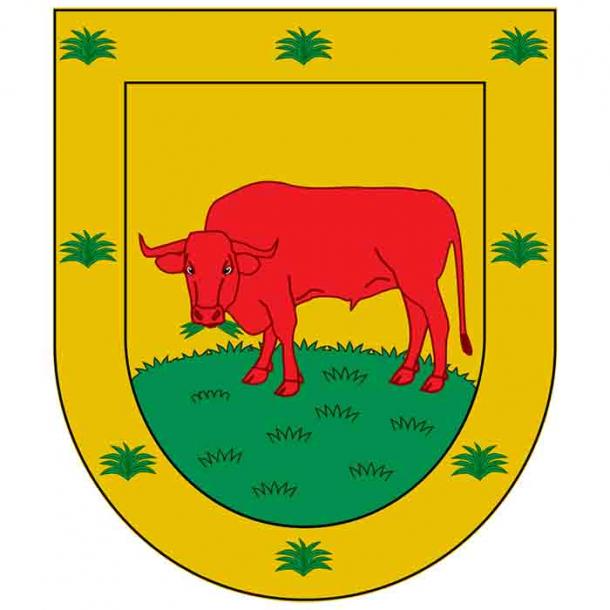
The coat of arms of the House of Borgia. (Echando una mano / CC BY-SA 3.0 )
The House Of Borgia Continued Until The Mid-18th Century
The House of Borgia continued to exist until the middle of the 18 th century. However, later members of the family did not reach the level of fame attained by Alfonso, Rodrigo, Cesare, and Lucrezia.
Moreover, the House of Borgia was not as powerful as it was when they had a family member on the papal throne. Nevertheless, some of these later Borgias were somewhat famous and attained some amount of power. These include Francis Borgia, a Jesuit who attained sainthood, Gaspar de Borja y Velasco, a cardinal, and Francisco de Borja y Aragón, a writer and courtier.
Top image: The House of Borgia is depicted here as “A glass of wine with Cesare Borgia,” a painting that clearly shows the wealth and power (church power) of this illustrious and infamous family. Photo source: John Collier / Public domain
By Wu Mingren
References
BBC History Revealed, 2015. Your Guide to the Borgias. [Online]
Available at: https://www.historyextra.com/period/renaissance/the-borgias-reputation-s…
Cavendish, R., 2007. Death of Cesare Borgia. [Online]
Available at: https://www.historytoday.com/archive/months-past/death-cesare-borgia
Lee, A., 2013. Were the Borgias Really so Bad?. [Online]
Available at: https://www.historytoday.com/history-matters/were-borgias-really-so-bad
MacCaffrey, J., 1908. Pope Callistus III. [Online]
Available at: https://www.newadvent.org/cathen/03187a.htm
Mallett, M. E., 2021. Cesare Borgia. [Online]
Available at: https://www.britannica.com/biography/Cesare-Borgia
Murphy, F. X., 2021. Alexander VI. [Online]
Available at: https://www.britannica.com/biography/Alexander-VI
New World Encyclopedia, 2021. Alexander VI. [Online]
Available at: https://www.newworldencyclopedia.org/entry/Alexander_VI
Palau I Orta, J., 2017. Lucrezia Borgia, Predator or Pawn?. [Online]
Available at: https://www.nationalgeographic.com/history/history-magazine/article/lucr…
The Editors of Encyclopaedia Britannica, 2020. Borgia Family. [Online]
Available at: https://www.britannica.com/topic/Borgia-family
The Editors of Encyclopaedia Britannica, 2020. Calixtus III. [Online]
Available at: https://www.britannica.com/biography/Calixtus-III-pope
The Editors of Encyclopaedia Britannica, 2020. Lucrezia Borgia. [Online]
Available at: https://www.britannica.com/biography/Lucrezia-Borgia
Wilde, R., 2019. The Rise and Fall of the Borgia Family. [Online]
Available at: https://www.thoughtco.com/the-borgias-infamous-family-of-renaissance-ita…
 RSS Feed
RSS Feed















 March 24th, 2021
March 24th, 2021  Awake Goy
Awake Goy  Posted in
Posted in  Tags:
Tags: 













